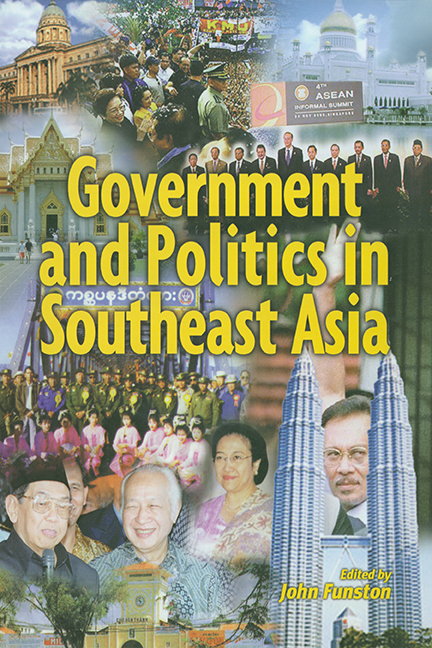3 - INDONESIA
Transforming the Leviathan
Published online by Cambridge University Press: 21 October 2015
Summary
INTRODUCTION
Indonesia is in transition, from authoritarian rule under former President Soeharto to an uncertain future. It is attempting to build a more democratic and economically sustainable state in one of the most heterogeneous and archipelagic countries in the world. With more than 216 million citizens, it bestrides Southeast Asia as a colossus. The region is hostage to its future.
Modern Indonesians view themselves as heirs to some great and refined civilizations. Two of these kingdoms assume pride of place. The first is the Hindu-Buddhist Srivijaya empire, established in Sumatra on the trading route between India and China, which came to exercise a loose suzerainty over parts of Malaya, Borneo and west Java from the 8th century until the 14th century. The second is the later Majapahit empire (1293–1520), based in Java, which extended to Sumatra, the Malay peninsula, Bali and parts of Borneo, though how far it covered eastern Indonesia is the subject of conjecture.
For post-independence Indonesian governments these two empires provide an indigenous rationale for modern state boundaries. This “Hindu-Buddhist past” remains important to many Indonesians, particularly in Java and Bali (the latter remains Hindu), notwithstanding the coming of Islam in the thirteenth century. Both the wording of the Indonesian state motto, and the official ideology of Pancasila, are Sanskrit, not Bahasa Indonesia (or the Indonesian language). Sanskrit names are common in Java (Sukarno and Soeharto to give just two examples), and the language occupies a similar status position as Latin for English or European language speaking peoples.
- Type
- Chapter
- Information
- Government and Politics in Southeast Asia , pp. 74 - 119Publisher: ISEAS–Yusof Ishak InstitutePrint publication year: 2001



